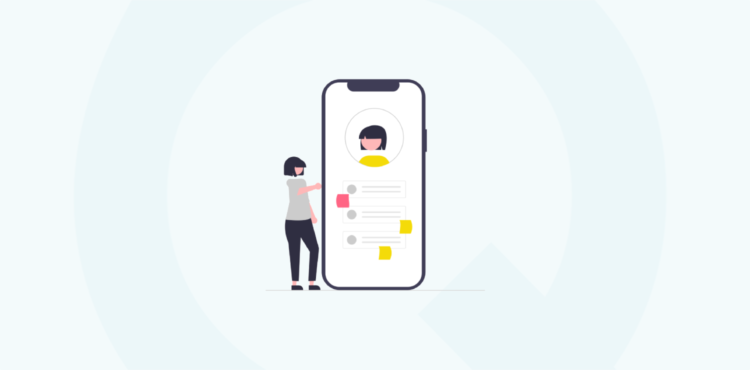As a mentor, you can teach young employees valuable skills and build their relationships. But with remote mentoring, you have to adopt certain steps to build relationships and transfer skills.
As it is, remote work is more challenging than in-person work in a few ways, including asynchronous hours, lack of social cohesion, and worker isolation.
So how can mentoring stay effective in today’s post-pandemic remote work world?
Create a remote mentoring plan
U.S. President Dwight D. Eisenhower said, “I have always found that plans are useless, but planning is indispensable.” And so it is for mentoring. In a remote work environment, the lack of non-verbal cues and non-intentional social interactions means you have to compensate with structure.
Before starting a mentorship program, your company should determine what its objectives of workplace mentoring are. Without a clear guide of what you want to achieve, it will be impossible to determine if it’s a success or not.
As a mentor, establishing a rapport and a reporting cadence with mutual expectations can be helpful. It keeps everyone involved focused and on track. Of course, as your relationship evolves so must the expectations and cadences.
An introductory meeting can include things like:
- Meeting dates, times, and frequency
- Success metrics: Consider setting Specific, Measurable, Achievable, Relevant, and Time-Bound (SMART) goals.
- Benchmarks for non-measurable success metrics like feelings of belongingness
- Deeper questions about personality preferences, motivations, and values
Putting all of these findings into a few concrete documents and coaching templates helps establish a single source of truth for the mentorship. Planning also includes knowing what both the mentor and the mentee’s expectations are. This may involve adjusting your mentorship style to the mentee’s needs, or the mentee adapting to your (or the organisation’s) requirements, or a bit of both. Being open with your needs helps establish a baseline of honesty on which you can build a great mentor-mentee relationship.

Another underrated part of mentorship programs is the non-work related connection. It builds rapport between the team and the employee in question and especially the mentor and the mentee. Some non-work related communication activities to plan may include:
- Donut meetings;
- Video games, and;
- Online trivia.
But remember the other part of the Eisenhower quote says plans are useless. Be open to pivoting if something isn’t working out. And make sure the mentee feels like they can ask for a different approach without jeopardising their relationship with their mentor.
Give and take feedback
Mentorship isn’t based on philosophical musings. It is built on concrete and actionable feedback you can give your mentee based on their work. You should give them feedback based on the SMART goals outlined above and their intangible attributes like attitude and tone.
But in every case, feedback should be concrete and actionable. Saying “you need to write a better proposal” doesn’t pass muster. Instead, try “Your proposal didn’t have enough sources for the arguments you are making. Next time, use more high quality academic sources and find at least one source for every claim you are making.”
Such feedback tells the mentee what is wrong and how to resolve it.
The same rule applies the other way around. Like any skill, mentorship requires making mistakes and practising to get better. Getting honest feedback from your mentees will help you mentor them better in return. As a bonus, teaching them to give concrete and actionable feedback prepares them for a role as a leader and mentor.
Over-communicate to stay aligned
Between 70 to 90% of human communication is nonverbal. One of remote work’s biggest weaknesses is the lack of nonverbal communication. Even with Zoom calls, most remote work is done alone in a room, with text as the primary interface.
With young workers in the crucial early stages of their careers, the importance of clear communication is even more important when remote mentoring. You can only bridge the gulf through regular and clear communication, with plenty of leeway for clarifying questions and tools.
So if there is one rule I have always followed as a remote worker it’s this: Over Communicate to stay aligned. This doesn’t mean every little thing you are doing has to be conveyed. Instead it means ambiguity should be avoided at all costs.
For most people, this means asking more questions than usual to remove any doubts and asking for more clarity in return. But beyond merely communicating, there are several steps you can take to stay aligned with your mentee.
Communicating clearly
Most people write like they speak, but think about this: How many people can actually speak well? In remote work, this becomes even more important. You have to be clear at multiple levels.
The stakes are even higher with remote mentoring. If you’re sending a message on Slack, be sure to make it clear, concise, and pointed. A message like “Try to make it to that meeting you have at three and come prepared with what I asked you to bring on our previous meet” is vague.
Instead take a few seconds and compose a more thoughtful message.
“Come to the meeting at 3pm with the marketing team.
Be sure to bring:
– Your report on industry growth
– A distribution plan.”
Yes, you can use tools like bolding, bullet points, emojis, and screenshots to enhance your messaging.
All of this formatting may seem like a waste of time. But a few extra seconds upfront can save you a lot of time. Vague or imprecise instructions can lead to a lot of back-and-forth while your mentee scrambles to figure out exactly what you discussed at your last meeting.
Using the right communication tools
By now, everyone knows how the pandemic led to the massive growth of Zoom video conferences. This is because it was (and is) the right tool at the right time. But as a mentor, you will always have the option to communicate across many channels at a time. Choosing the right channel is also important.
For instance, Slack may be the best for short form communication on a minute-by minute basis. But because it is harder to search for deliverables in search, you could require the mentee to send big deliverables by email.
Being creative with tools
Sometimes the right tools are the most well known tools. Zoom may be great when having a discussion with plenty of back and forth. But a little imagination with the available remote work tools can lead to much better outcomes for your remote mentorship. For example, a lesser known tool like Dee Kit can help you better communicate ideas with your mentee.
You can also use older technologies like physical letters or phone calls to build a personal touch and sense of community within the company. Creativity with tools can be the difference between a good mentorship and a great one that lasts for years.
Having a backup communications plan
Despite massive growth of broadband across the world, the internet can still be spotty in many areas. If you have mentees in underserved areas, they may not have access to the best wifi. Even in a high bandwidth area, an employee living in a basement can face communication problems.
So having a backup communications plan is important and knowing how you will adjust ensures the quality of mentoring doesn’t drop significantly. This can include using a phone call instead of a video call or Slack in case the wifi isn’t strong enough for video chat.
Be mutually accountable
Ultimately, remote mentorship is of benefit to both the mentor and the mentee. This includes being respectful of each other’s time and preferences. A mentor should communicate the importance of not missing meetings or deadlines, for instance.
However, the mentor should meet these expectations with equal assiduousness by arriving to meetings prepared and on time.
Remote work makes it easy to get the nuances of communication to get lost in the shuffle. That’s why a culture of accountability within a workplace is important.
Everyone should feel rewarded for their hard work. Be sure to provide an incentive of some sort to a mentee to keep them interested in the work.

Image: Pexels
Provide learning resources beyond mentorship
A great mentorship program shouldn’t only focus on directed learning. There should be several non-mentor resources a mentee should be able to reach out to whenever necessary. Some of these resources may include:
Educational resources
The mentee doesn’t need to be spoon-fed all the information. They should be given resources to learn some things on their own. You should provide some company learning materials in the form of articles, papers, videos and more to suit their learning style.
Shadowing
Shadowing is when one employee or student tries to learn the day-to-day practicalities of a particular job. It’s usually executed by the shadower observing the work of someone in an area of interest.
As a mentor, you can provide your mentee remote shadowing experiences by having them attend calls from other teams or demos to customers. Remote shadowing helps a mentee understand the different branches of the organisation, empathise with employees in different departments, and develop worker camaraderie through personal chit-chat.
Newsletter
For a larger company with more than one mentee, you can have a newsletter with regular updates for the mentees. It can help foster a sense of community within the mentees themselves, which can lead to better collaborative learning.
Collaborative learning
This happens when employees learn by tackling and solving problems together. For instance, a sales manager can get feedback from a sales rep to improve their overall pitch. Or a mentee developer can collaborate with a mentee UX designer to bring a different perspective to their respective projects.
Such collaborative learning can even consist of the mentor and mentee working together on a project. Rather than relying on the familiar paradigm of learning through instruction and advice, working together can be an effective way to transmit intangible skills like workplace communication and the nuances of project management.
Know you’re setting an example
The huge benefit of mentoring as yet unstated is that the mentee is observing and learning from all your actions. If you give good feedback, they are more likely to do the same to their seniors or juniors. If your messages are concise and pointed, their communication will be better. If you display accountability by respecting their time, they will extend the same courtesy to their colleagues in the future.
As remote work takes over the industry, there is an emerging ethic of remote work best practices. By providing the right kind of guidance, you are effectively training them for remote mentoring of their own juniors.
In Summary
Mentorship as a process should last longer than a month or two. Some professional mentors become lifelong career allies to young professionals. So any remote mentoring program should be approached with seriousness.
If you can use the six tips shown above, your mentorship program should be off to a flying start and provide a mutually fulfilling experience to you, your mentee, and your company.
About the Author
Arunabh Satpathy is a B2B content marketer with a UX design background. He advocates for content and design collaborating to maximise business KPIs. His content writing spans verticals including cybersecurity, eCommerce, AI/ML, DevOps etc.



